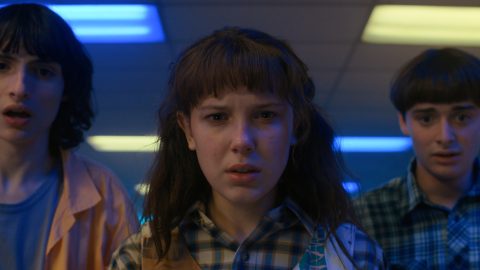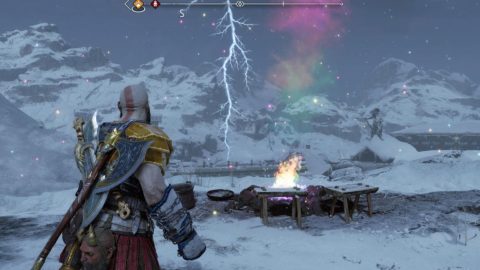
I first met Manuel Calavera in a small Cornish newsagent. Clad in his reaper cloak, Manny adorned the front of PC Zone‘s cover-disc, under the tantalising offer to ‘be the first to play LucasArts’ fantastic new adventure’. Somewhere between the Zone’s endorsement, the fact that it was a new LucasArts title and this intriguing depiction of death’s beckoning hand seized my 11-year-old self’s gaze. Returning from my family’s annual West Country jaunt the next day, I raced upstairs to install the demo of the cryptically titled Grim Fandango.
I didn’t know it at the time but I was about to discover my favourite video game. Released in October 1998, Grim Fandango was to be LucasArts’ final foray in the adventure game genre that it had perfected. Developed over a three-year period, Fandango had been conceived and driven by Full Throttle-visionary Tim Schafer (he of later Psychonauts fame) as a further evolution of the genre on both technological and stylistic fronts. Cannily melding the 3D engine of Jedi Knight: Dark Forces II with beautifully illustrated pre-rendered sets, Fandango’s designers were able to create a stunningly unique and absorbing game world. Depicting the afterlife of Aztec folklore, infused with a jazz-era soundtrack and populated by characters straight out of a Raymond Chandler novel. The game had a wholly original, irresistible aesthetic.
There were few exemplars when it came to first-rate video game narratives back then. Many considered games to be a childish pursuit, designed to keep hyperactive kids at bay. Video games just weren’t supposed to have such high-brow conceits as character development, year-spanning story arcs or musical scores that could rival anything playing at the nearest cinema. It was an impression so pervasive that even avid players like myself shruggingly accepted the medium’s limitations. That was, until Grim Fandango opened my eyes to the fact that not only could games actually compete on those fronts, but that interactive entertainment could even forge stronger emotional hooks.
Grim‘s charismatic hero is the aforementioned Manny Calavera, a skeletal travel agent in the purgatorial Land of the Dead, working for the ‘Department of Death’. Manny isn’t travel agent-ing in the conventional sense of the word though, as the opening cutscene reveals, Manny’s job is to try and sell recently arrived souls routes across this hazard-filled domain to reach the Land of Eternal Rest. Those that have lived good lives qualify for speedier travel via a sports car, ocean cruise or – if an exceptionally virtuous life had been led – swift departure via the top-of-the-line express train, the Number Nine. Calavera has hit a slump however, finding himself dogged by a revolving door of sub-par souls. Unable to make his commission, we assist our papier-mâché-headed protagonist with a little industrial espionage, covertly acquiring the positively saint-like Mercedes ‘Meche’ Colomar. Astonished that she still somehow doesn’t qualify, Manny’s suspicions are raised. With Meche lost in the wilderness of the Land of the Dead, we embark on a journey to find her…

As with its spiritual forebears Full Throttle, The Secret of Monkey Island and Day of the Tentacle, gameplay is predominantly based on solving an array of puzzles. Depending on how your brain is wired up, play-time can vary quite dramatically. With no hint system and clues only subtly alluded to via dialogue, Fandango’s often perplexing routes forward could take hours to crack. But, the game’s compelling narrative and stylised world motivated my younger self to resist rage-quitting. Once one of the game’s particularly complicated obstacles had been overcome – such as Year 2’s betting stub/cat-race photo-finish conundrum – there was a huge sense of accomplishment. And, the part we played in Manny’s small triumphs strengthened our bond with Fandango‘s leading man.
In fact, Grim Fandango was the first game where I can recall genuinely caring about the protagonist (I’m so sorry, Doomguy). With dialogue supplied by Cuban actor Tony Plana, Calavera is a well-drawn and magnetic figure to spend our time with. Initially driven by self-interest (“Love is for the living Sal, I’m only after her for one reason: she’s my ticket out of here”) this charming underdog crystallises into a selfless hero by the game’s closing chapter (“There’s no job for me now, except to bring you and everyone else here to the end of the road.”). It’s a gradual arc that spans the game’s four years, with players sharing Manny’s earning of greater wisdom via every bewildering puzzle, snaking dialogue tree and new location.
Each of the game’s four chapters are set a year apart, and introduce a wealth of new environments and feels. Manny’s adventure takes him through the flaming beaver-infested Petrified Forest to the port town of Rubacava, managing a nightclub in the game’s second (and most memorable) year. By the game’s third year we’re captaining a ship, the SS Lola, as we loom close to the edge of the world. Reaching the fourth and final year, we return to a now-gaudy and decadent El Marrow (the city where Manny toiled at the game’s start) and prepare for a final confrontation with Hector Le Mans – Grim‘s big-bellied, big bad. These locales may be widely different, but Schafer’s Land of the Dead is a coherent, art deco chic universe, fleshed out further by interactions with its inhabitants. Each of Grim’s characters resembles either a variation of a Mexican ‘Calaca’ figure, or a cartoonish ‘elemental spirit’ (read: demon). Chief among which is our orange companion throughout the whole game; loveable, gambling-hooked driver Glottis.

It’s this colourful cast of over fifty characters – and Manny’s relationships with them – that breathed intricate life into the workings of Fandango‘s mythology. Introduced naturally via the game’s branching puzzles, and with top-notch voice acting to boot, each conversation presented unique perspectives on all levels of this afterlife, from our slick, smug competitor in the D.O.D’s high-rise office, the loathsome Domino Hurley, to the barnacle-encrusted, ocean floor-roamer Chepito. The nightlife of Rubacava encountered throughout the second year are a particularly diverse crew, and are among the key reasons why this most noir-ish of chapters remains the game’s most iconic. Peppering the port town are the likes of salty old sea dog Velasco, jittery tattoo artist Toto Santos and Olivia Ofrenda – the treacherous owner of beatnik dive, The Blue Casket.
It must be stressed that the cinematic presentation of Grim Fandango was a truly mind-blowing experience back in 1998. While LucasArts’ imaginative adventure game canon had been critically hailed, their largely wry and fourth-wall breaking tone, along with their 2D nature hadn’t invaded my consciousness at anywhere near the same level that Fandango‘s vividly painted, art-deco chic world did. While, like these genre predecessors, Fandango is a frequently humorous affair, its gags never undercut the game’s emotional through-line, or the truth of its characters.
The game’s epilogue, as Manny and his compatriots bid us farewell, still sits among the most tear-eliciting endings in gaming history. As a child, I was wholly unprepared for its punch. Back then, video games had never made me reach for a Kleenex. I didn’t know that they could.

“That’s terrible. You’ll never sell a game called ‘Grim Fandango’.” Schaefer recalled horrified LucasArts colleagues saying to him ahead of its release (in an interview with Eurogamer). They had a point. Grim Fandango sold poorly. Very poorly. And, as a result LucasArts prioritised more action-oriented fare – ideally emblazoned with the Star Wars logo. But failure is an interesting thing. For myself and a handful of other devotees, Manny Calavera, and the world of Grim Fandango remained etched on our hearts for years to come. Quotes and references became something of a secret code: a nod of mutual understanding between us stalwart few who had traversed the Land of the Dead.
‘Video games are not art’ decreed esteemed film critic Roger Ebert back in the early 2000s. Though it’s a view he’d later recant, Ebert’s heavily publicised pronouncement wasn’t just a mark of the high brow’s disregard of gaming, but its outright animosity toward it. While of course, there were multitudes of video games feeding this impression (Spot of Carmageddon, anyone?), Tim Schafer and the Fandango creative team were ahead of the curve, anticipating interactive media’s immense potential as a fresh way of telling involving stories.
Decades later, and we can comfortably conclude that the medium that has presented us with Bioshock’s undersea capitalist utopia, the solemn beauty of Journey’s desert expanse and Edith Finch’s melancholy pilgrimage through her family tree is absolutely a boundless canvas on which very special art can be created. But, it’s hard to think of anything – certainly in my own experience – that presaged Grim Fandango sledgehammering that very point home, way back in 1998.
Despite it being frustratingly difficult to play for many years after its release, due to issues with increasingly faster PC processors. Schafer’s company, Double Fine Productions, thankfully re-acquired the Grim Fandango IP and released a sparkling modern remaster across all formats and consoles back in 2015. Sprucing up the slightly dated graphics while remaining true to that original vision. If you’ve never played it, then Grim Fandango, to paraphrase its hero’s parting sentiments, remains the most enjoyable of trips.
Grim Fandango Remastered is available on PC, Xbox One, PS4 and Nintendo Switch. You can read the rest of the Remastered column here.
The post ‘Grim Fandango’’s imaginative afterlife anticipated a colourful future for the medium appeared first on NME.









